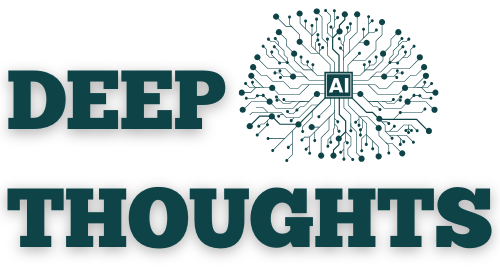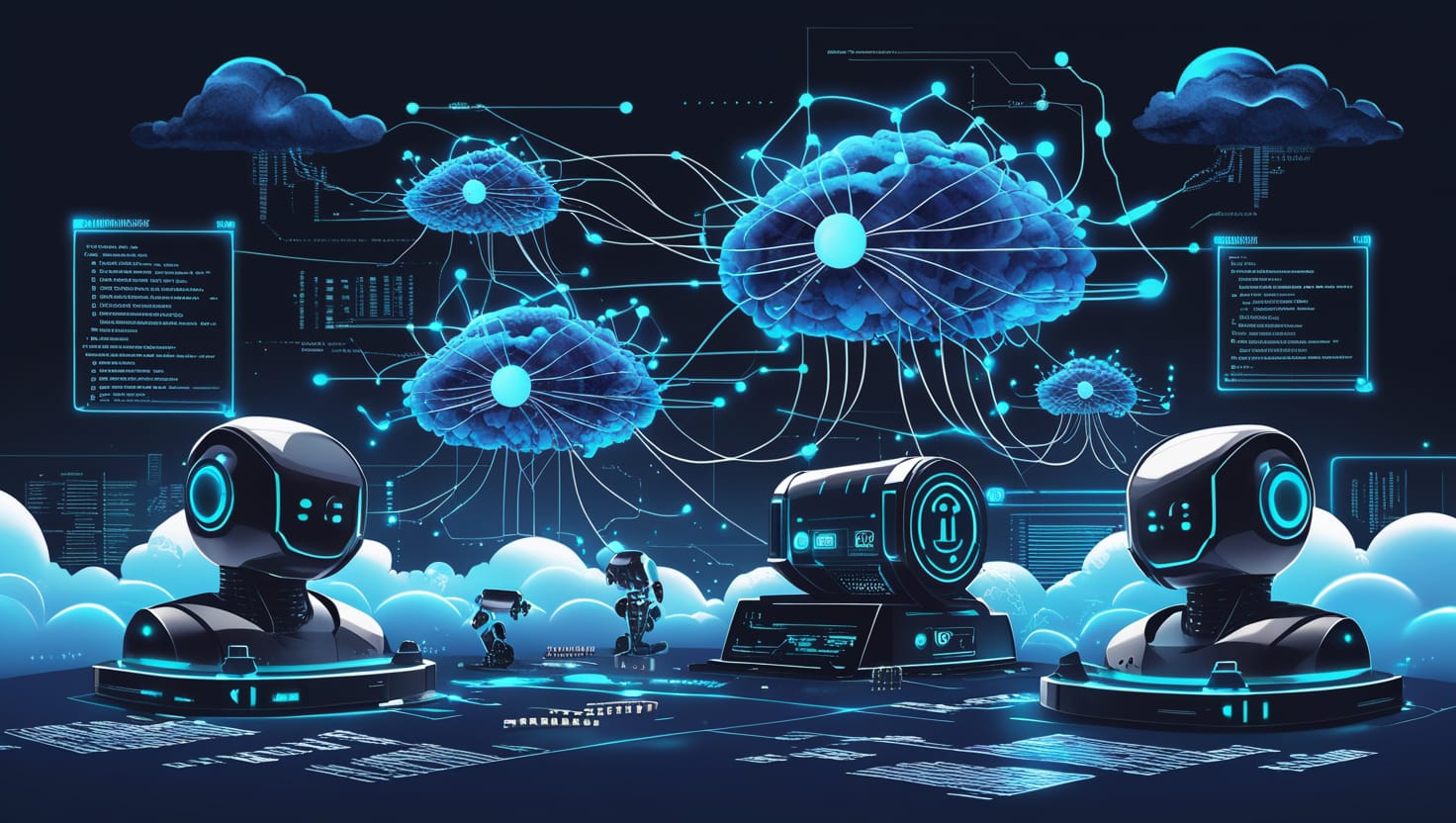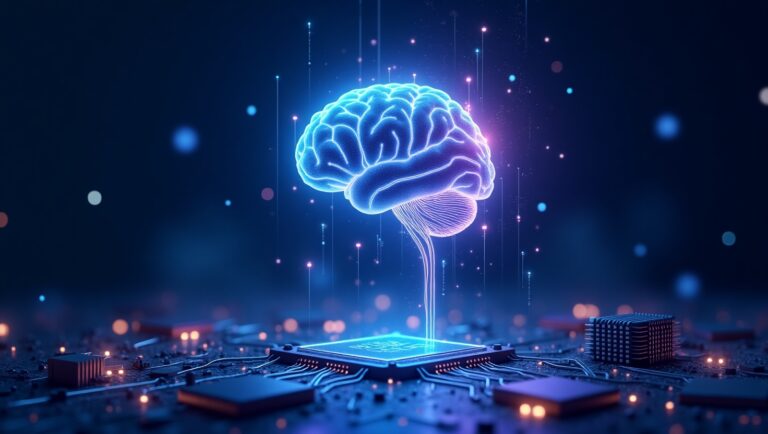The Backbone of Advanced AI
Deep learning is a revolutionary field within artificial intelligence (AI) that powers many of the most impressive technological advancements we see today, from voice assistants like Siri to the face recognition technology in smartphones. But what exactly is deep learning, and why is it so important? In this article, we’ll explore the core concepts of deep learning, how it differs from traditional machine learning, and the real-world applications driving its success.
What is Deep Learning?
Deep learning is a subset of machine learning, which, in turn, is a subset of artificial intelligence. The key characteristic of deep learning is that it uses artificial neural networks—models inspired by the human brain—to process data in layers, allowing the system to learn complex patterns and make decisions with minimal human intervention.
Unlike traditional machine learning, which often relies on hand-crafted features (i.e., manually selected characteristics from data), deep learning can automatically learn features from raw data. This capability is what makes deep learning especially effective for tasks involving large amounts of unstructured data, such as images, audio, and text.
How Deep Learning Works
At the core of deep learning is the artificial neural network. These networks consist of layers of interconnected “neurons” (also known as nodes), each performing a mathematical operation on the data it receives. These layers are categorized as:
- Input Layer: The first layer that receives raw data (e.g., pixel values in an image, sound wave frequencies in an audio file).
- Hidden Layers: Layers in between the input and output layers where the majority of learning takes place. These layers progressively extract features and patterns from the data.
- Output Layer: The final layer that produces the model’s prediction or classification based on the learned features.
What makes deep learning “deep” is the use of many hidden layers, often numbering in the dozens or hundreds. These layers enable the model to learn from very complex data structures and relationships.
Types of Deep Learning Models
There are several types of deep learning models, each specialized for different tasks. Some of the most common include:
1. Convolutional Neural Networks (CNNs)
CNNs are primarily used for image recognition and processing. They automatically detect patterns in images such as edges, shapes, and textures, making them perfect for tasks like facial recognition, object detection, and medical image analysis.
Example: In self-driving cars, CNNs are used to identify pedestrians, road signs, and other vehicles on the road.
2. Recurrent Neural Networks (RNNs)
RNNs are ideal for processing sequential data, such as time-series data or natural language. They have a unique ability to maintain memory of previous inputs, allowing them to make predictions based on past information.
Example: RNNs are used in speech recognition systems and language translation services. They help predict the next word in a sentence, improving the accuracy of machine translation.
3. Generative Adversarial Networks (GANs)
GANs are a class of deep learning models that consist of two networks: a generator and a discriminator. The generator creates data (such as images), while the discriminator evaluates how realistic the data is. The two networks “compete” with each other, improving the quality of the generated data over time.
Example: GANs are widely used to create hyper-realistic synthetic images, art, and even deepfake videos.
4. Transformers
Transformers are a relatively recent development that have revolutionized natural language processing (NLP). They use a mechanism called “attention” to weigh the importance of different words in a sentence, enabling models to process language more effectively than older techniques like RNNs.
Example: Large language models like GPT (which powers this conversation) and BERT use transformers to understand and generate human language in a coherent way.
Why Deep Learning is Important
Deep learning has become a game-changer in AI due to its ability to handle vast amounts of unstructured data, learn from it, and make complex predictions. Here are some reasons why deep learning is so important:
1. Accuracy
Deep learning models are able to outperform traditional machine learning algorithms in many tasks, especially in fields like computer vision, speech recognition, and NLP. They achieve this by learning hierarchical representations of data, where each layer of the model extracts more complex and abstract features.
2. Automation
Deep learning can automatically extract relevant features from data, removing the need for time-consuming manual feature engineering. This makes it highly suitable for tasks that involve massive datasets, such as analyzing video footage or detecting fraudulent transactions.
3. Scalability
Deep learning models can scale with increasing amounts of data. As more data becomes available, the performance of these models improves, which is critical in fields like autonomous vehicles or personalized healthcare, where continuous data flow is vital.
4. Real-time Processing
Many deep learning models are capable of performing tasks in real-time, making them ideal for applications where fast, immediate decisions are necessary, such as in voice assistants, facial recognition, or autonomous driving.
Real-World Applications of Deep Learning
Deep learning has already had a profound impact on many industries, and its influence continues to grow. Here are a few of the most exciting and practical applications of deep learning:
1. Healthcare
Deep learning is transforming healthcare by enabling more accurate diagnostics and personalized treatments. CNNs are being used to analyze medical images, helping doctors detect conditions like cancer, pneumonia, and heart disease earlier than ever before. Additionally, deep learning models are used in drug discovery to predict how different compounds might interact with the body.
2. Autonomous Vehicles
Self-driving cars rely heavily on deep learning to interpret data from cameras, LIDAR sensors, and radar. Deep learning models help these vehicles detect obstacles, read road signs, and make driving decisions in real-time.
3. Speech and Language Processing
Deep learning models like RNNs and transformers have greatly improved voice recognition and natural language understanding. These models power voice assistants (Siri, Alexa), chatbots, and real-time translation services.
4. Finance
Deep learning is used in finance for credit scoring, fraud detection, and algorithmic trading. By analyzing vast amounts of transaction data, deep learning models can identify unusual patterns, helping banks and financial institutions mitigate risk.
5. Entertainment
Streaming services like Netflix and Spotify use deep learning to recommend content based on users’ preferences. The models analyze your viewing or listening habits and suggest shows or songs that you might like, making your experience more personalized.
Challenges in Deep Learning
Despite its many successes, deep learning does come with its own set of challenges:
- Data Dependency: Deep learning models require large amounts of labeled data to train effectively. In some domains, such as healthcare, collecting sufficient data can be difficult or expensive.
- Computational Resources: Training deep learning models requires significant computational power, often involving specialized hardware like GPUs or TPUs. This can be a barrier for smaller organizations.
- Interpretability: Deep learning models are often criticized for being “black boxes.” It can be difficult to understand how a model arrived at a particular decision, which can be a concern in high-stakes applications like healthcare or criminal justice.
- Overfitting: Deep learning models can sometimes overfit to the training data, meaning they perform well on the data they were trained on but struggle to generalize to new, unseen data.
The Future of Deep Learning
The future of deep learning is incredibly bright. As computational power continues to increase, deep learning models will become even more capable. Researchers are also exploring new architectures, such as attention mechanisms and quantum computing, to overcome some of the current challenges.
Deep learning is poised to revolutionize many more industries in the coming years. Whether it’s enabling more advanced AI applications, improving healthcare outcomes, or creating new forms of entertainment, deep learning will continue to shape the world in profound ways.



